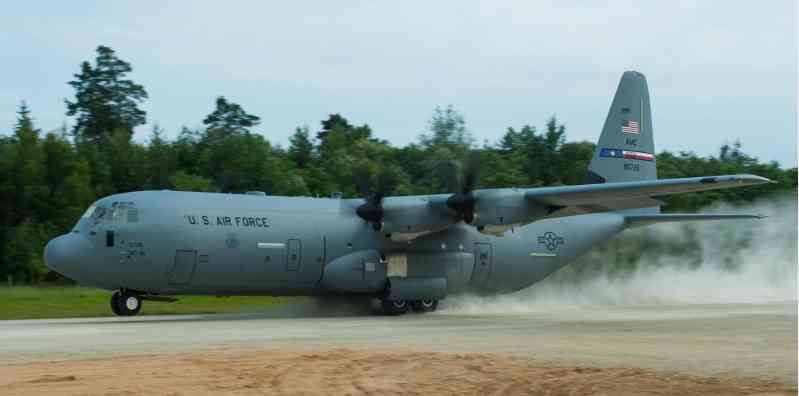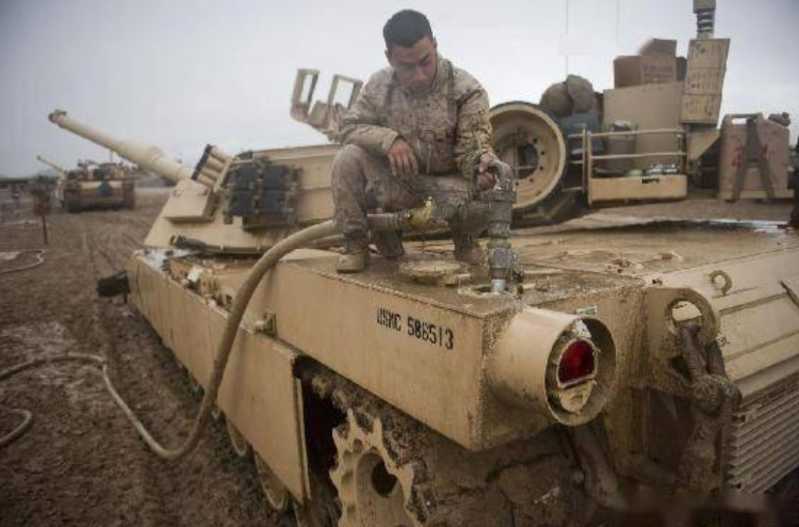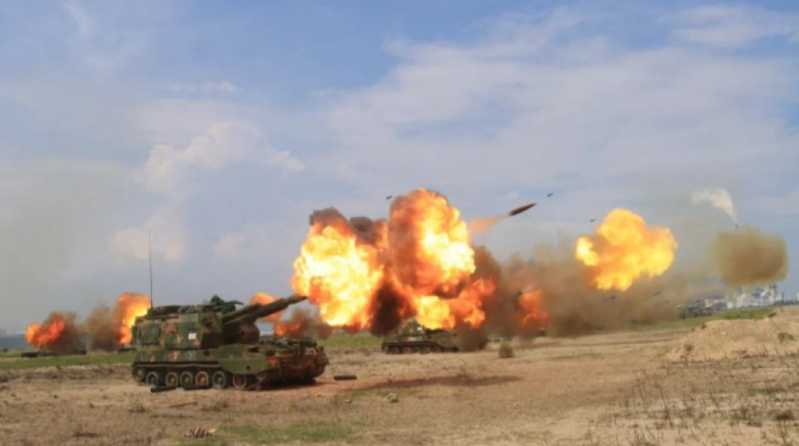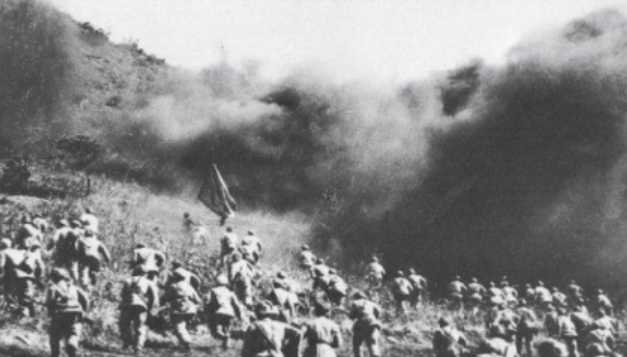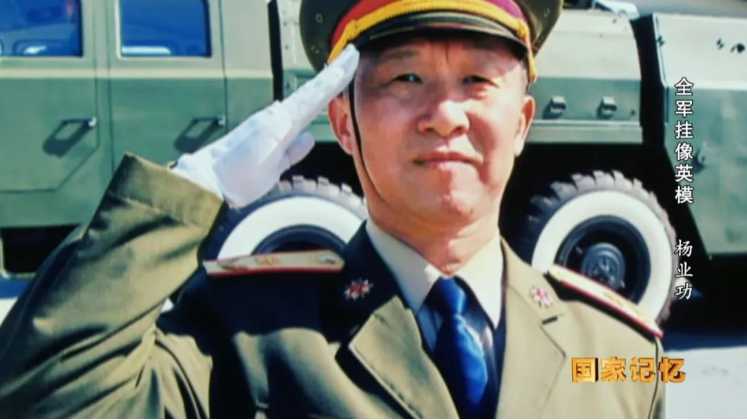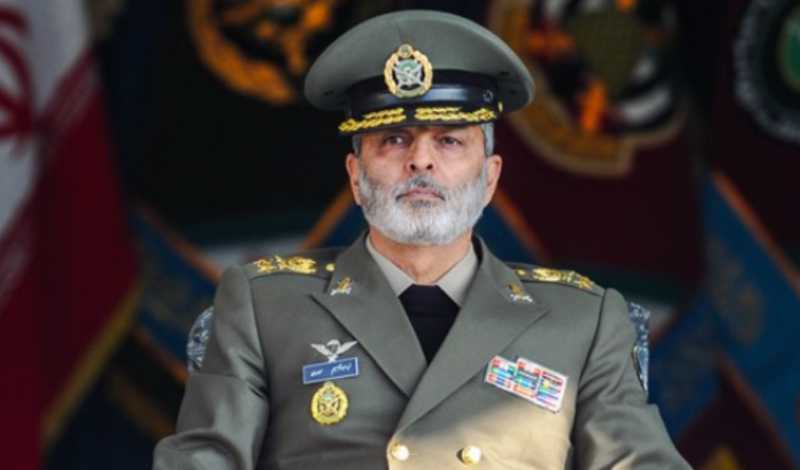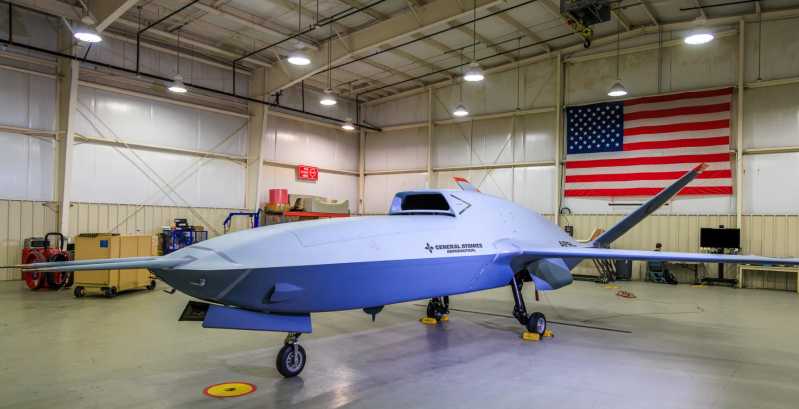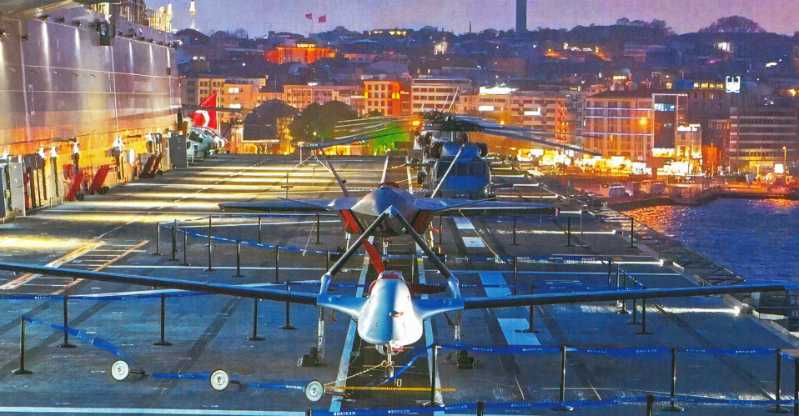"A good fighter has no great achievements", this famous saying is very suitable to describe military transport aircraft that do not need to fight directly with the opponent. As the leader of military transport aircraft of the same level, the C-130 has played its value in the safe take-off and landing of every sortie in peacetime for 70 years since its birth, and has also demonstrated its ability in local wars and conflicts. This article selects many actual battles that the "Hercules" has participated in, and strives to present the appearance of this "battlefield all-rounder" in the war.
First test
In 1960, after the independence of Congo, which had been under Belgian colonial rule for a long time, Belgium was still able to actually intervene in the country’s internal affairs due to the chaos of internal political factions. Marked by the assassination of the country’s first prime minister Lumumba in 1961, Congo gradually fell into the abyss of civil war. In October 1964, with the support of Western powers, the government army suppressed the left-wing armed group "Simba" in Stanleyville (now called Kisangani): the latter detained nearly a thousand European and American citizens stranded there as hostages, forcing the government army to seek help from the powers.
Belgium naturally would not miss the opportunity to show the strength of its "suzerain", so it formed a capable paratrooper commando. However, the Belgian Air Force lacked the corresponding transport aircraft and overseas bases to complete this force projection mission. At this time, the 322nd Air Division of the US Air Force stationed in southern France dispatched 5 C-130E transport aircraft. These "Hercules" transport aircraft were the first models equipped by the US military. The transport aircraft flew from France to Belgium, picked up the paratrooper commando, stopped in Moron, Spain for refueling, and then flew directly to the British Ascension Island in the Atlantic Ocean 5,000 kilometers away for pre-war assault training-most Belgian paratroopers lacked experience in training with "Hercules".
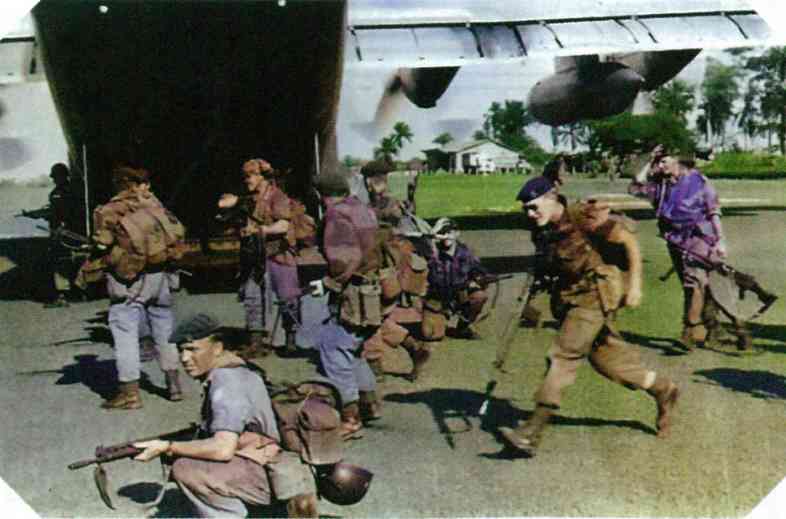
With the breakdown of negotiations with the "Simba" armed forces, the rescue operation code-named "Red Dragon" was launched on November 23, local time. The battle officially started in the early morning of the 18th. Five C-130s filled with commandos (and their small three-wheeled vehicles) stopped briefly at Kamina Airport controlled by the government forces and immediately rushed to Stanleyville, 1,000 kilometers away. Following closely were another seven empty C-130s, ready to carry the rescued hostages. After the CIA’s A-26 attack aircraft completed the ground strafing suppression, 310 paratroopers jumped off the "Hercules" and exchanged fire with the "Simba armed forces" and cleared the runway.
At this time, the leader of the C-130 still stayed over the airport to take charge of the overall situation, command the paratroopers (the other four had returned to the capital controlled by the government forces), and guide the subsequent C-130s to land. This rather conspicuous "Hercules" attracted more anti-aircraft firepower near the airport, causing damage to the aircraft’s hydraulic system, but it still persisted until the subsequent C-130 After arriving near the airport, they turned to the capital. As the Belgian paratroopers gradually took control of the situation, the Simba armed forces quickly collapsed, and the Hercules fleet successfully transported the hostages from Stanleyville to the capital.
Despite some ground fire during the hostage transport—a C-130 wing tank was hit and leaked oil, and the mechanic used a rag-wrapped broom handle to plug the leak and successfully solved the problem—the Hercules’ debut was still quite successful. After the entire team retreated to the French base (with no casualties among the US crew members), the 322nd Air Division Task Force won the "1964 US Air Force Most Outstanding Flight Award" and the lead pilot Captain Secord won the Distinguished Flying Cross.
Experienced brutal combat
If the scattered firepower experienced by the C-130 in "Operation Red Dragon" was at most the intensity of a street fight, then the anti-aircraft firepower encountered by the C-130 in the Vietnam battlefield a few years later was comparable to purgatory. As the scale of the U.S. military’s involvement in the Vietnam War expanded, the missions undertaken by the U.S. Air Force transport aircraft units became more and more diverse, and they often needed to go deep into the control areas of the North Vietnamese army. As the aircraft with the strongest ability to adapt to the battlefield environment, the "Hercules" naturally had an obligation. In the history of the Vietnam War, the Battle of Khe Sanh in 1968 was often mentioned repeatedly. Although in hindsight, the offensive launched by the Vietnamese army did not have the same determination as the Dien Bien Phu Battle in 1954, at that time, under the exaggeration of the U.S. media and some U.S. military commanders, Khe Sanh seemed to be in danger, prompting President Johnson to make up his mind, "We must not let Khe Sanh become the ’Dien Bien Phu of the United States’". In order to ensure the logistical supply of the Khe Sanh defenders, the U.S. military carried out an unprecedented air transport and airdrop operation on the Vietnamese battlefield.
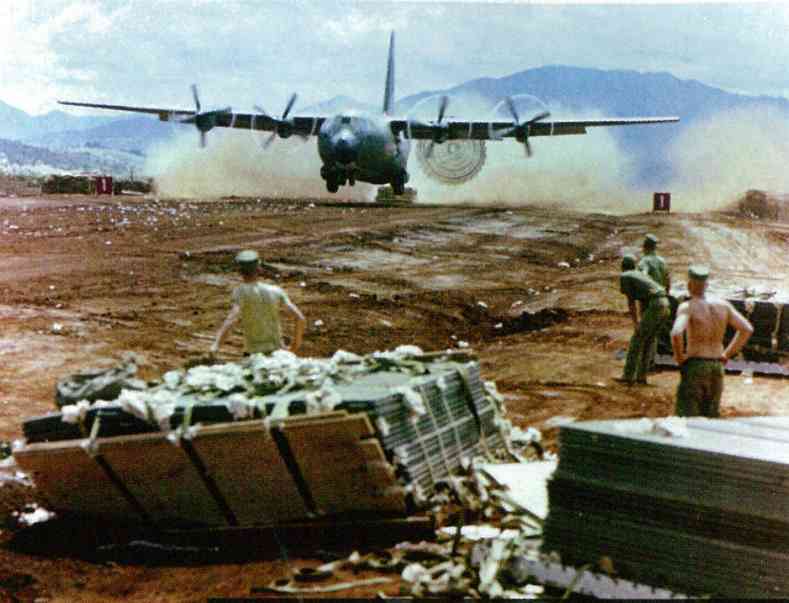
During the campaign, the US military airlifted 14,356 tons of supplies (equivalent to the displacement of a cruiser), 65% of which were airdropped by C-130. In order to improve operational efficiency, the U.S. military used the "Low-Altitude Parachute Extraction System (LAPES)" on a large scale for the first time on the C-130. When the aircraft passed through the field at ultra-low altitude, the pallet carrying the cargo was pulled out of the cargo hold tail door by the towing parachute and landed, and then the aircraft pulled up and returned to the next flight. Later, the "Ground Parachute Extraction System" (GPES) also began to be used. Similar to the landing method on an aircraft carrier, a towing hook was installed on the cargo pallet, which hooked the cables laid on the ground and pulled the cargo out of the aircraft.
Although LAPES and GPES can significantly improve air transport efficiency, the latter is more suitable for the narrow airspace of Khe Sanh and has higher safety, but in order to transport the wounded and other tasks, C-130 sometimes has to take off and land on the 1,300-meter aluminum runway in Khe Sanh. On February 5, a C-130 carrying ammunition was hit by anti-aircraft guns during a forced landing, and the ammunition box caught fire. 5 The crew members put out the fire while assisting the ground personnel to complete the unloading, and successfully drove the aircraft to escape with one engine and landing gear tire damaged. Captain Darman was awarded the Air Force Cross for his merits, becoming the first transport pilot to receive this honor during the Vietnam War.
During the entire Khe Sanh Campaign, although many Hercules were riddled with bullet holes, except for a Marine Corps KC.130 loaded with fuel for ground troops that was hit and burned during approach, most C-130s were repaired and put back into use, demonstrating the strong survivability and battlefield adaptability of this model. In sharp contrast, the smaller but more technologically backward C-123 piston transport aircraft, although it was deployed far less frequently than the Hercules, paid the price of 3 aircraft being shot down (one of which carried 49 people).
Cross-border performances
After using the Hercules series for more than 10 years, the US military gradually became proficient and began to explore the expansion of the use of the C-130 series. In addition to the impressive aircraft carrier take-off and landing and polar take-off and landing, the ancient "mother-child aircraft" concept was also applied to the Hercules and directly put into the Southeast Asian battlefield. The Ryan 147 series unmanned reconnaissance aircraft, which was born due to the frequent shooting down of manned reconnaissance aircraft such as the U-2, is a "short, flat and fast" project based on the Firebee jet target aircraft. Its fuselage size cannot be further optimized, so its carrier aircraft naturally has to use the C-130 platform used by the Firebee. In order to increase the mounting and control capabilities of the drone, these C-130s have been modified and are called GC-130 or DC-130. Up to 4 drones can be mounted and up to 16 147 series drones can be controlled simultaneously.
Although the combination of 147A and DC-130 was ready to replace U-2 for reconnaissance missions as early as during the Cuban Missile Crisis in 1962, the US Air Force Chief of Staff LeMay canceled the plan at the last minute and continued to use U-2 instead. He believed that this secret weapon should play the role of a "surprise weapon" in the future. Sure enough, the 147B/C/G/HT high-altitude reconnaissance type (many of which were shot down by the People’s Liberation Army Air Force and ground-to-air missile forces), the 147D/E electronic reconnaissance type specifically targeting the S-75 (Sam-2) ground-to-air missile, the 147F electronic jamming type, and the 147N accompanying decoy type became the most important UAV family in the Vietnam War.
No matter which model is used, the DC-130 with sufficient range and reliable performance is the preferred carrier of the 147 series of UAVs. If recovery is required, it is achieved by grabbing its parachute from the air through heavy helicopters such as SH-3/CH-3 and CH-53. On the first day of Operation Iraqi Freedom in 2003, the US Navy’s DC-130 also launched three modified 147 series drones, which carried a large amount of metal foil and flew above the Tomahawk cruise missile group, successfully forming a "foil strip" to cover the missile penetration, until the fuel ran out and crashed, performing the "last dance" of this Cold War combination.
Highlight moment
Although the "Hercules" showed almost all the excellent qualities of a military transport aircraft on the battlefield in Vietnam, and there was no lack of wonderful "cross-border performances", this did not make it gain a more significant reputation in the media. Instead, shortly after the end of the war, an "atypical war" on the African continent made the name of C-130 famous almost overnight.
On June 27, 1976, a French passenger plane carrying 258 passengers flew from Israel to France and was hijacked by terrorists to Entebbe Airport in Uganda. The hijackers held 105 hostages and demanded that Israel release the 53 arrested terrorists. On July 4, elite commandos drawn from the Reconnaissance Battalion directly under the General Staff of the Israeli Army, the 1st "Golani" Brigade and the 35th Paratrooper Brigade rushed to Entebbe Airport, 4,000 kilometers away, to rescue the hostages held by terrorists in the terminal. The Israeli government named the hostage rescue operation "Operation Hercules" after the nickname of the main aircraft model C-130 in the operation.
After careful preparation, four C-130s carrying commandos and armored vehicles secretly took off from Sharm el-Sheikh Airport at dusk, maintained radio silence, flew long distances and at ultra-low altitudes over the Red Sea, overcame adverse weather conditions, and landed at Entebbe Airport at 23:00 late at night. When the Israeli commandos drove black "Mercedes-Benz" and "Land Rover" cars that looked like the Ugandan presidential vehicles and rushed to the terminal whose internal structure had been investigated, the battle had not yet begun, but the outcome had already been decided.

From the landing of the first C-130 to the take-off and return of the last C-130, the surprise attack lasted only 53 minutes before it was declared a success. Seven hijackers were killed, and three of the 103 hostages died. One of the hostages was killed because he stood up suddenly and was mistaken for a terrorist. The only Israeli commando killed was Lieutenant Colonel Jonathan Netanyahu, the commander of the General Staff Reconnaissance Battalion, the brother of the current Israeli Prime Minister Benjamin Netanyahu. The battle at Entebbe Airport made the "Hercules" and the "myth" of the Israeli special forces famous.
Failure
After Belgium and Israel, two small countries, successfully completed two hostage rescue operations with the help of C-130, the US military finally had its own "opportunity" - the 1979 Iranian hostage crisis. After half a year of negotiations, the then US President Carter approved the "Eagle Claw Operation", with the US Army Special Forces as the main action force. In this operation, the Army’s RH-53D heavy transport helicopter became the final assault force, while the Air Force’s C-130 was responsible for transporting special forces personnel to a salt flat in Iran, opening up a forward base, and transporting the fuel needed for the helicopters.
Although in this chaotic operation caused by bad weather and poor cross-service coordination, 6 C-130s (3 EC-130s transporting fuel and other supplies and 3 MC-130s transporting special forces) performed most normally, the "Eagle Claw Operation" was a link-by-link, seriously lacking redundancy in the combat plan, which ultimately led to a failure: an RH-53D that took off in the wind and sand misjudged its own posture and crashed into the vertical tail of the EC-130 parked in front, killing 8 of the 19 people on the two aircraft and seriously injuring 4. This collision completely declared the operation a failure.
In the end, the remaining five C-130s took away all the surviving US military personnel, while the other five RH-53D helicopters that lacked fuel or were damaged by shrapnel, as well as two still burning wreckages (including the dead on board), were abandoned at the forward base, and Operation Eagle Claw came to a hasty end. What is less known is that two weeks after the failure of the Eagle Claw Project, the US military also modified three ultra-short takeoff and landing C-130s (called XFC130H), each of which was equipped with a large number of rocket boosters from the "Asroc" anti-submarine missiles, "Standard" ship-to-air missiles and "Shrike" anti-radiation missiles. These C-130s were required to complete takeoff and landing in a stadium opposite the US Embassy and land on the aircraft carrier with hostages.
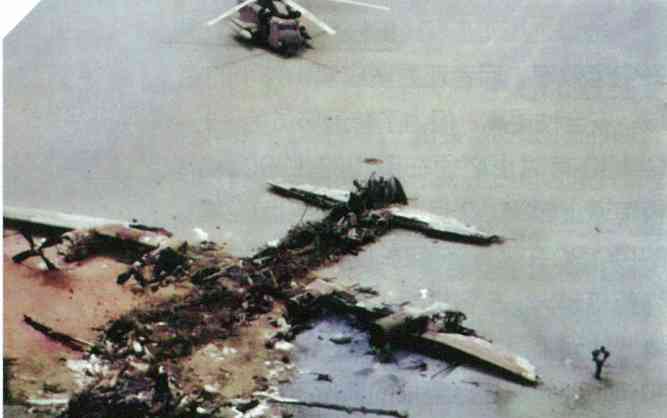
However, due to the complex control and low fault tolerance of this rocket booster system, an XFC-130H crashed during a test takeoff due to thrust imbalance. In addition, as Reagan defeated Carter in the 1980 US election and the Iranian hostage crisis was resolved on the day of Reagan’s inauguration in January 1981, this crazy plan was quickly terminated. In the end, only one test aircraft numbered 74-1686 was retained as a scientific research project to continue to explore and improve the short takeoff and landing potential of the Hercules. Currently, the aircraft is on display at the Empire State Museum of Aeronautical Sciences in Glenville, New York.
Nothing can be done to save the situation
Compared to the wealthy United States, the Hercules users in small countries have no time to get involved in crazy projects like the XFC-130, and can only try to expand the use of the C-130 in their own air forces. In the 1982 Falklands War between Britain and Argentina, the Hercules fleet of the Argentine Air Force not only undertook the busy personnel and material transportation mission between the Falklands and the mainland, but also played an important role in two successful sea attacks.
On May 4, 1982, the Argentine Air Force dispatched two Super Étendard fighters carrying Exocet missiles to successfully sink the British Royal Navy’s Sheffield guided missile destroyer, opening a new chapter in the history of world naval warfare. In this battle, the C-130 played a key role: 15 minutes after the Super Étendard took off, the KC-130H of the 1st Air Transport Squadron refueled the two fighters in the air to ensure that they had enough fuel to complete the next two hours of flight. Considering that the Super Étendard attack might face difficulties and increased fuel consumption, the KC-130H waited in the refueling area until it was confirmed that the attack was successfully completed before returning.
As the first Argentine fighter to arrive in the Falkland Islands on the day the war broke out, the TC-68 C-130H later added a multi-link bomb rack used by the A-4 attack aircraft on the inner side of the wing, and was used as a guest bomber. On June 8, 1982, the aircraft successfully attacked a 100,000-ton Liberian supertanker. Coincidentally, the name of the tanker was the same as the nickname of the C-130 - "Hercules". Although the "Hercules" tanker did not sink at the time, after struggling to Rio de Janeiro, the shipowner found an unexploded bomb in the oil tank. The shipowner believed that it was too dangerous to remove the bomb, so on July 20, the ship was towed to the sea about 400 kilometers from the coast of Brazil and sank. This move became the biggest "indirect victory" of the "temporary bomber" C-130.

Although the Argentine Air Force lost only one "Hercules" during the war, and TC-68 has been preserved as a war memorial to this day, the "Hercules" fought in all directions (the British C-130 was also involved in the war), but ultimately failed to reverse Argentina’s defeat on the battlefield. Just like the rows of bombs dropped from the cargo hold by the Pakistani Air Force C-130 in the second Indo-Pakistani war in 1965, these efforts also failed to enable them to regain the initiative on the battlefield.
The sword is still sharp
As time entered the 21st century, the US Air Force never encountered a strong opponent in local wars. Except for the "gunship" AC-130, other series of aircraft are undergoing modernization and upgrading. The mission of the "Hercules" has returned to the main responsibility of a transport aircraft, and it should not have to face the war again. However, the special needs brought about by the "war on terror" launched by the United States have made this veteran once again hold the sword and rush to the front line. In November 2001, the US military launched the "Enduring Freedom" operation against Afghanistan. As part of the "deterrence and intimidation", the US military once again used the BLU82 "Daisy Cutter" heavy bomb that had been used in the Vietnam War and the Gulf War to clear landing sites, clear minefields, or attack specific enemy targets. The US military evaluated after the war that the BLU-82, a large-yield conventional bomb, still has its indispensable role, so it decided to develop a super bomb with greater deterrence, which is the GBU-43/B giant air-blast bomb. It also has a more well-known name - "Mother of All Bombs" (MOAB).
"Mother of All Bombs" is a giant bomb with a total length of 9.19 meters and a weight of 9.85 tons. It is more than 3 tons heavier than BLU-82, and its explosive equivalent is equivalent to 11 tons of TNT. Its huge size exceeds the carrying capacity of the bomb bay of the US bomber. But in fact, the bomb was not designed to be delivered by bombers at the beginning, but by C-130 transport aircraft. Since 2003, the United States has produced 15 "Mother of All Bombs", two of which were used for testing. The first actual combat application was in the air strike against the extremist organization "Islamic State" in Afghanistan in 2017.
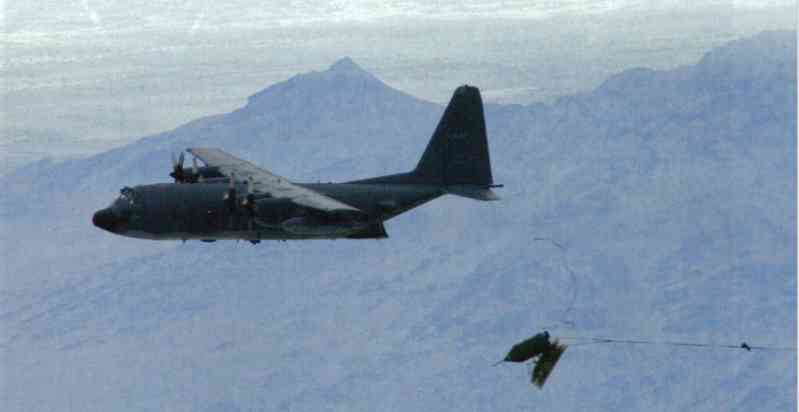
On April 13, 2017, based on local intelligence, the U.S. military decided to use the "Mother of All Bombs" to attack the "Islamic State" tunnels on the border between Afghanistan and Pakistan. The bomb was dropped from a C-130 at 7:32 p.m. local time and exploded; two days later, local officials reported that as many as 96 "Islamic State" militants, including four main commanders, were killed in the tunnels. Ironically, these tunnels were first built by the Afghan "Mujahideen" supported by the CIA in the 1980s to resist the Soviet Union.
Although the actual impact of this strike on the "Islamic State" is still controversial, the C-130’s ability to throw super-large weapons and equipment has been proven again. With the introduction of new concept equipment such as "Fast Dragon", the "Hercules" flying into the next decade is always ready to continue to play the experience and skills of "veterans" on a wider battlefield.


